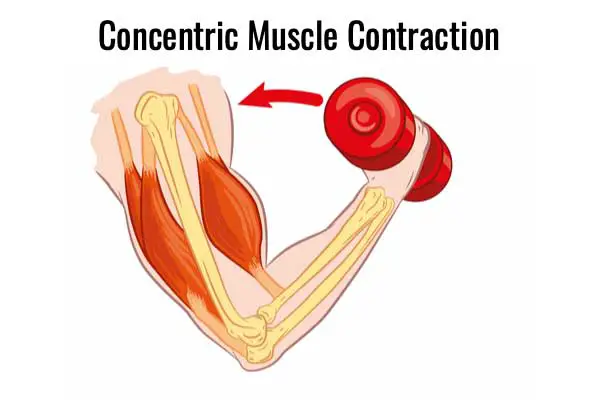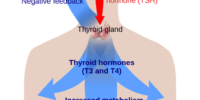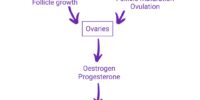How Muscle Contraction And Strength Work

Muscle contraction and strength are critical components of human movement and essential for maintaining a healthy lifestyle. Understanding how muscles work can aid in developing effective exercise routines, preventing injuries, and treating certain medical conditions. Muscle contraction and strength are complex processes involving the interaction of multiple physiological systems, including the nervous, muscular, and skeletal systems.
This article will explore the anatomy of a muscle fiber, the role of nerve impulses in muscle contraction, the sliding filament theory, types of muscle contractions, factors affecting muscle strength, and the benefits of strength training. Additionally, common myths about muscle contraction and strength will be debunked, and tips for improving muscle contraction and strength will be provided.
By the end of this article, readers will have a comprehensive understanding of how muscle contraction and strength work and how to optimize their muscle health.
Key Takeaways
- Muscle contraction and strength involve the nervous, muscular, and skeletal systems, and understanding how muscles work can prevent injuries and treat medical conditions.
- Muscle fibers are composed of myofibrils and sarcomeres, with sarcomeres being the functional unit consisting of thick and thin filaments.
- Calcium ions bind to troponin, causing tropomyosin to move and exposing binding sites on actin filaments, leading to muscle contraction through interaction between actin and myosin filaments in sarcomeres.
- Adequate rest and nutrition, balanced training including strength, endurance, and flexibility exercises, and progressive overload can enhance muscle development and prevent injury.
Anatomy of a Muscle Fiber
The structural composition of a muscle fiber, including its myofibrils and sarcomeres, plays a crucial role in determining its contractile properties and ultimately its strength.
A muscle fiber is composed of many myofibrils, which in turn are made up of repeating units called sarcomeres. Sarcomeres are the fundamental functional unit of muscle contraction and consist of thick and thin filaments that slide past each other, shortening the sarcomere and producing muscle contraction.
The thick filaments are composed of myosin, while the thin filaments are composed of actin, tropomyosin, and troponin. When a muscle is stimulated to contract, calcium ions bind to the troponin, causing the tropomyosin to move away from the myosin binding sites on the actin filaments.
Myosin heads then bind to the exposed actin binding sites and pull the thin filaments towards the center of the sarcomere, causing the sarcomere to shorten. The more sarcomeres that are activated, the greater the force of contraction and overall strength of the muscle.
The Role of Nerve Impulses in Muscle Contraction
Nerve impulses play a crucial role in facilitating the communication between the nervous system and muscle fibers. When a nerve impulse reaches the end of a motor neuron, it triggers the release of a neurotransmitter called acetylcholine.
This neurotransmitter then binds to receptors on the muscle fiber, causing a change in the membrane potential of the muscle fiber. This change in membrane potential triggers the release of calcium ions from the sarcoplasmic reticulum, which then bind to the protein troponin, causing a shift in the position of tropomyosin.
This shift exposes the binding sites on the actin filaments, allowing the myosin heads to attach and form cross-bridges.
Once the myosin heads have formed cross-bridges with the actin filaments, they undergo a conformational change, pulling the actin filaments towards the center of the sarcomere. This movement is powered by the hydrolysis of ATP, which provides the energy needed for the myosin heads to detach from the actin filaments and reset for the next cycle of cross-bridge formation.
The repeated formation and detachment of cross-bridges results in the shortening of the sarcomere, which in turn leads to muscle contraction. Thus, nerve impulses play a crucial role in initiating and regulating muscle contraction, allowing us to perform a wide range of movements and activities.
The Sliding Filament Theory
Through the sliding filament theory, it is proposed that muscle movement is achieved through the interaction between actin and myosin filaments in the sarcomere. The sarcomere is the basic unit of muscle contraction, and it is composed of thin filaments made of actin and thick filaments made of myosin.
The sliding filament theory suggests that muscle contraction occurs when the myosin heads attach to the actin filaments and pull them towards the center of the sarcomere, causing the sarcomere to shorten.
To better understand the sliding filament theory, it is important to consider the following key points:
- The actin filaments contain binding sites for myosin heads, which bind to them during muscle contraction.
- The myosin heads use energy from ATP to move back and forth along the actin filaments, pulling them towards the center of the sarcomere.
- As the myosin heads pull the actin filaments, they release and reattach multiple times, resulting in a ratcheting motion that shortens the sarcomere and causes muscle contraction.
Overall, the sliding filament theory provides a clear and detailed explanation for how muscle contraction and movement occur. By understanding this process, researchers can develop new treatments for muscle-related diseases and injuries, and athletes can improve their performance through targeted training and conditioning.
Types of Muscle Contractions
Various types of muscle contractions exist, each with unique characteristics that affect the force generated and the movement produced.
Isometric contractions occur when the muscle generates force without changing length, and is commonly seen in exercises such as planks and wall sits.
In contrast, isotonic contractions result in a change in muscle length, and can be further divided into concentric and eccentric contractions.
Concentric contractions occur when the muscle shortens against a load, such as during a bicep curl, while eccentric contractions occur when the muscle lengthens under tension, such as during the downward phase of a squat.
Each type of muscle contraction has its own specific benefits and drawbacks.
Isometric contractions are effective for building muscular endurance, as they can be sustained for longer periods of time without inducing fatigue.
Isotonic contractions, on the other hand, are more effective for building muscle mass and strength, as they involve a greater range of motion and can handle heavier loads.
Understanding the different types of muscle contractions is important for designing effective exercise programs and achieving desired fitness goals.
Factors Affecting Muscle Strength
One important factor that influences the ability of skeletal muscles to generate force is their cross-sectional area, which is directly related to the number and size of muscle fibers they contain. A larger muscle cross-sectional area means that there are more muscle fibers available to contract, resulting in greater force production.
Additionally, having larger muscle fibers can also contribute to greater force production, as larger fibers have a higher capacity for force generation than smaller fibers.
Another key factor that affects muscle strength is the neural drive to the muscle. The nervous system plays a crucial role in activating muscle fibers to contract, and the strength of the signals sent to the muscle can influence the force that is generated.
Research has shown that strength training can improve the neural drive to muscles, resulting in increased force production.
Other factors that can affect muscle strength include muscle length, joint angle, and the speed of muscle contraction. Understanding these factors can help individuals develop effective training programs to optimize muscle strength and performance.
Benefits of Strength Training
Strength training has been shown to provide numerous benefits for individuals, including improvements in bone density, muscular endurance, and overall physical function. Here are some of the benefits that people can get from regular strength training:
- Increased muscle mass: Strength training helps to increase muscle size and mass, which can lead to improved physical performance, increased metabolism, and a more toned appearance.
- Reduced risk of injury: Strength training can help to improve joint stability and flexibility, which can reduce the risk of injury during physical activity and daily life.
- Improved quality of life: Regular strength training can lead to improved physical function, increased energy levels, and better overall health, which can all contribute to a higher quality of life.
Overall, strength training is an important component of a well-rounded fitness program. By incorporating strength training into their routine, individuals can enjoy a wide range of benefits that can improve their health, fitness, and overall well-being.
Common Myths About Muscle Contraction and Strength
Misconceptions about the mechanics of muscle function and development often prevent individuals from achieving their fitness goals. One common myth is that lifting heavy weights is the only way to build muscle strength. While lifting weights can certainly help build muscle strength, it is not the only way.
Bodyweight exercises, such as push-ups and squats, can also be effective in building muscle strength. Additionally, focusing solely on strength training can lead to imbalanced muscle development, as flexibility and cardiovascular endurance are also important components of overall fitness.
Another common myth is that muscles only grow during exercise. In reality, muscle growth occurs during the recovery period after exercise. When muscles are subjected to stress during exercise, tiny tears occur in the muscle fibers. These tears stimulate the muscle to repair and rebuild itself, resulting in stronger muscle fibers.
Adequate rest and nutrition are crucial during the recovery period, as this is when the muscle fibers repair and grow. Overtraining or not allowing enough recovery time can actually hinder muscle growth and lead to injury.
Tips for Improving Muscle Contraction and Strength
Improving muscle function and development can be achieved through a variety of strategies that go beyond traditional weightlifting techniques. One of the most effective ways to enhance muscle contraction and strength is to incorporate progressive overload into your training routine. This involves gradually increasing the amount of weight lifted over time to challenge and stimulate muscle growth.
Additionally, focusing on compound exercises that engage multiple muscle groups, such as squats and deadlifts, can also promote muscle development.
Another important aspect of improving muscle contraction and strength is proper nutrition and recovery. Consuming adequate amounts of protein is crucial for building and repairing muscle tissue, while getting enough rest and sleep allows the body to recover and repair from intense workouts.
It is also essential to avoid overtraining, as this can lead to muscle fatigue and injury. Instead, aim for a balanced approach to training that includes a mix of strength, endurance, and flexibility exercises, and allow for sufficient rest and recovery time between workouts.
By implementing these strategies, individuals can improve their muscle function and development and achieve their fitness goals in a safe and effective manner.
Conclusion
In conclusion, understanding muscle contraction and strength is essential to achieving optimal physical performance.
The anatomy of a muscle fiber, the role of nerve impulses in muscle contraction, and the sliding filament theory are fundamental concepts that explain the mechanism behind muscle contraction.
Understanding the different types of muscle contractions and the factors that affect muscle strength can help individuals tailor their exercise routines to their specific goals.
Strength training is a highly effective way to improve muscle strength and overall physical fitness.
By challenging muscles to work against resistance, individuals can increase muscle mass, improve bone density, and enhance their metabolism.
Contrary to popular myths, muscle contraction and strength are not solely determined by genetics or gender.
With proper training, nutrition, and recovery, anyone can improve their muscle contraction and strength.
Therefore, incorporating strength training into one’s fitness routine can lead to a multitude of benefits and improve overall physical health.









